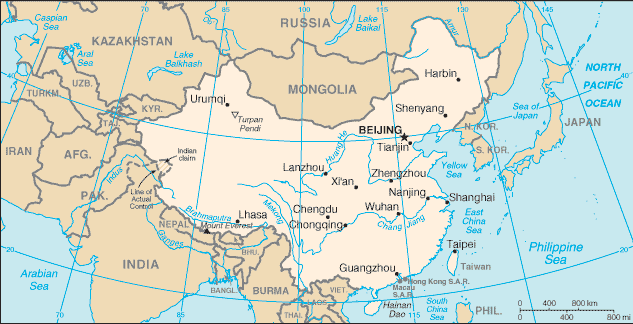The World Health Organization says hand, foot and mouth disease (HFMD) is a common infectious disease of infants and children. It is characterized by fever, painful sores in the mouth, and a rash with blisters on hands, feet and also buttocks. However, more severe clinical presentation with neurological symptoms such as meningitis, encephalitis and polio-like paralysis may occur. It is prevalent in many Asian countries.

Image/CIA
In 2015, Japan reported a dramatic increase in HFMD cases. With 381,581 HFMD cases recorded in 2015, that represented a nearly 300,000 case increase from 2014 when 83,219 cases were seen. In fact, the situation was so bad in Japan that the US Centers for Disease Control and Prevention issued a travel notice for travelers to Japan.
China reports large numbers of cases annually and 2015 was no different. A total of 2,014,999 cases of HFMD were reported including 124 deaths in China for 2015. Despite the large number, it was quite a decrease in cases and deaths compared to 2014 when 2,819,581 and 394 were reported, respectively.
Hand, foot, and mouth disease is caused by viruses that belong to the Enterovirus genus (group). This group of viruses includes polioviruses, coxsackieviruses, echoviruses, andenteroviruses.
Late last year, The China Food and Drug Administration (FDA) announced the approval of a enterovirus 71 (EV71) inactivated vaccine (human diploid cell) designed by the Institute of Medical Biology, Chinese Academy of Medical Sciences.
Related:
- Vietnam: Man quarantined in Ho Chi Minh City hospital with suspected Ebola
- Taiwan raises Zika travel notice for Thailand, Recommends ultrasounds for pregnant women returning from Zika-affected countries in the Americas
- Polio: Pakistan reports 1st WPV case of 2016, Laos sees two additional vaccine-derived poliovirus cases



2 thoughts on “Hand, Foot, and Mouth Disease: Japan reports increase while China saw a decrease in 2015”